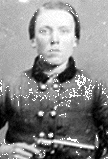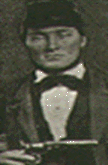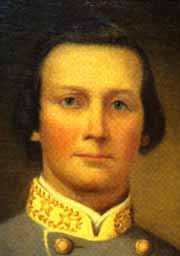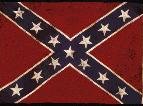|
Taylor Rosters With Notes |

|
Sixteenth South Carolina C.S.A. |

|
Taylor Rosters With Notes |

|
Sixteenth South Carolina C.S.A. |
|
See Notes Below Company Index |
|
Want an email link to your ancestors name in the roster? batsonsm@bellsouth.net |
|
For more information about how to obtain a copy of your ancestors service record you may wish to contact the South Carolina State Archives. The Complied Service Records for South Carolina Soldiers are also housed in most of the major public libraries on microfilm. In Greenville County, the South Carolina Room of the Greenville County Public Library has an extensive collection of material for genealogical research. This includes the Complied Service Record Microfilm and other publications. For those wishing for a simple search by name the Broadfoot Guide to Confederate Soldiers is available. Most libraries have the 27 volume set that covers all southern service. However, the two volume set on South Carolina is most helpful for service rosters by soldiers name (Volume One) or unit (Volume Two).The Confederate Relic Room in Columbia and the South Caroliniana Library at the University of South Carolina are two other large collections available to those doing research. The index for the manuscript collection at the South Caroliniana Library is available in most public libraries in South Carolina, including the South Carolina Room of the Greenville County Library. Manuscript and other collections are available at other libraries and universities that might be helpful. In the Upper Part of South Carolina both Furman and Clemson have extensive collections. Finally the Greenville County Gen Web and Pickens County Gen Web pages will be most helpful. For out of print, reprint, and other hard to find books on South Carolina and the War Between the States: Broadfoot Publishing, First Corps Books in Columbia, Morningside Press, and Bibliofind are all excellent sources and there are many others. |
|
Sources for these Rosters Other Greenville County Units A note on these rosters, in the attempt to get the most complete roster possible, many sources are used. Sadly, I am sure there are both duplications and omissions. The Combined Service Records microfilm is the primary source of this information. However, Taylor’s work, which drew from the Memory Rolls in the State Archives, was the beginning. The Broadfoot Confederate State Service, South Carolina rosters are also used, more to see if I read the Combined Service Records the same way as the editors at Broadfoot. In some few cases we differ. Broadfoot is drawn from the Combined Service Records so transcription of hand written records is involved. The original muster rolls that provided the information for the Combined Service Records and the Combined Service Records are hand written documents so interpretation is involved, so misinterpretation is possible on several levels. Company clerks who could and often did make errors assembled the original muster rolls. Imagine a man who can neither read nor write being asked to give his name, imagine the spellings that can be conjured in a world without universal communication or “Hooked on Phonics” to serve as a guide. If you are not creative and you work with this material you soon will be. How many ways can an “I” be made to look like a “T” or “J” or even a “W?” In any list of this type, if you do not find the person you are looking for get creative with writing and spelling. If they are not on the list chances are they are misspelled or misfiled. Take the case of boline, as I read the card or bolin, e. as Broadfoot read the card or Boling, Elliott as the card should read. Then add the case of Wm. Green, Wm. Greene, Wm. B. Green, Wm. R. Green and Wm. B. Greene, how many folks are we talking about here and who are they? In addition, men died on the battlefield and in hospitals and were not identified correctly or the units they served in were confused. Then remember that the bodies were often moved at least once and in many cases twice after the initial burial. A number of “16th men” on the McGavock Cemetery rosters are certainly not from the 16th and the identified graves of the 16th in Georgia are as bad or worse, not to mention the lists from the horrid P.O.W. camps of the era. All of that being a given, I have chosen to list as many men as I could and provide information about possible other enlistments within S.C. units. In this case, the case of possible enlistments in other units, there are cases where it is simply not possible to list everything (Knowing how many different Wm. Smith there are should provide ample example.). That being the issue I have chosen to list those units where transfer was likely or names were so unique or compelling as to warrant their inclusion. These decisions are arbitrary and some of the information given is not about the same man but rather two men of the same name, my only excuse being it is better to list than to overlook. If there is no notation concerning the Broadfoot Index by a man’s name it means I agree with Broadfoot and the man served in no other unit. Tombstone data, family records, and any other possible source of information are included. The following list is of some of the sources used and of some of the units that had heavy Greenville County Enlistment at some point during the war. Cross over to and from the Sixteenth is the rule, rather than the exception. At times of extreme difficulty, like the Atlanta Campaign, men maybe listed as deserted who are with other units. One could know this only by examining each of the musters in all possible units. Until recently, the ability to do this was only a dream, my thanks to the editors at Broadfoot Publishing in North Carolina for making the dream a reality. Sources include but are not limited too the following: Hewett, Janet and Lawrence, Joyce; South Carolina Confederate Soldiers, 1961-65, Volume I, Name Roster, Volume II, Unit Roster, Broadfoot Publishing. (B or Broadfoot) Combined Service Records Microfilm – Greenville County Library – available at the major libraries in South Carolina, the State Archives, and the National Archives. (CSR) Memory Rolls – State Archives. (MR) Taylor, John S.; Sixteenth South Carolina Regiment, C.S.A., From Greenville, South Carolina, A Press (T) Jones, Eugene; The Struggles of the Gallant 24th Regiment, South Carolina Volunteers, 1861-1865. (J) Kirkland, Randolph, Jr.; Broken Fortunes: South Carolina Soldiers, Sailors & Citizens Who Died in the Service of Their Country and State in the War for Southern Independence, 1861-1865. (K) Wyckoff, Mac; A History of the 2nd South Carolina Infantry: 1861-65. (W or Wyckoff) Soldiers and Sailors who died in Federal Prisons and Military Hospitals in the North, ISBN#911317-34-1. (SS) Greenville Co. Historical Society; The Presence of the Past: Epitaphs in Greenville Co., South Carolina. (GB) S.C. Department of Archives; Roll of the Dead, South Carolina Troops, Confederate State Service. (ROH) List of Confederate Burials housed at Kennesaw Mountain Battlefield, National Park Service. (KM) Franklin Chapter, U.D.C.; McGavock Cemetery Records, Carnton, Franklin, Tennessee. (MG) Burial and Cemetery Records published by a number of individuals in Greenville County, South Carolina. (O) Confederate Pension Records, 1902, 1903, 1904, 1919. (CPR) Bil Brasington's work on State and Reserve Units Other Units commonly associated with Greenville County, South Carolina: Company B – Second South Carolina – Kershaw’s Brigade - This is the Butler Guard of Greenville and served throughout the war. Company F – Fourth South Carolina – Jenkins’ Brigade – Company F and the Sixteenth share many dual enlistments when men left the unit in 1862 and later joined the Sixteenth to avoid conscription. Many of the men from the Fourth end up in Company I or K of the Hampton Legion, when the legion infantry absorbs those few left living in the Fourth Battalion after Sharpsburg. These two companies represent all that is left of the Fourth Regiment, later the Fourth Battalion of earlier fame. Company G – Fourth South Carolina – Jenkins’ Brigade - Again, dual enlistments are common with men leaving the unit in 1862 and later joining the 16th. Many of the men from the fourth also end up in the Company I or K of the Hampton Legion, when it absorbs those few left in the Fourth or Mattison’s Battalion after Sharpsburg. . Company E – Thirteenth South Carolina – Gregg’s/ McGowan’s Brigade – This company had some Greenville connections and many men from Greenville were scattered throughout the Thirteenth. However, it is primarily a Spartanburg Regiment. Company B – Twenty-second South Carolina – Evans’ Brigade - This unit had a number of men from the Sixteenth serving with it, including Wm. Green of Company F, Sixteenth. Company H – Twenty-second South Carolina – Evan’s Brigade - This unit is almost exclusively from Greenville County. It is probably one of the companies carried to the unit when Stephen D. Goodlett formed the Twenty-second. Goodlett was from upper Greenville County and practiced law in Pickens County. Company E, Hampton Legion Infantry – Jenkins’ Brigade - Bozeman Guards – Formed in the Fariview Section of Greenville County at the beginning of the war. Company F, Hampton Legion Infantry – Jenkins’ Brigade - Davis Guards – Formed in lower Greenville and Anderson County. Company I, Hampton Legion Infantry – Jenkins’ Brigade - Old Fourth Battalion Company K, Hampton Legion Infantry – Jenkins’ Brigade - Old Fourth Battalion Company B, Hampton Legion Cavalry – Hampton’s Cavalry Brigade - This unit will eventually be absorbed by the Second South Carolina Cavalry and was formed from men in the lower end of the county. Company K – Second South Carolina Cavalry – Hampton’s Cavalry Brigade– This Company is formed from Company B, Hampton Legion Cavalry – Lower end of Greenville County Company F – Second South Carolina Cavalry – W.K. Easley’s Company, primarily from Pickens County but there are many men who crossed the county line to join this unit. This unit was also a part of the Fourteenth Battalion of S.C. Cavalry at one point in its organization. Company A – Palmetto Battalion Light Artillery. – Furman Artillery – This unit descended from Campbell’s Company of McCreary’s First and probably the old Furman University units. It was stationed on the coast of South Carolina and was therefore a desirable assignment. In 1862, General Pemberton allowed the P.B.L.A. to expand and Company A produced two new units. Company H and Company I. Company K was also formed at this time. Rosters are located on this site. Company H – Palmetto Battalion Light Artillery – Formed in 1862, in 1864 the terms of enlistment were questioned and the men were allowed to choose a unit in an active theatre or become subject to the conscription act. The Captain, Thomas Holtzclaw, was the brother of George Holtzclaw of the Sixteenth and many of the men came to the Sixteenth. Rosters are located on this site. Company I – Palmetto Battalion Light Artillery – Formed from men of both Company A and H of the P.B.L.A. the history of this unit is not unlike that of Company H. Rosters are located on this site. Company K – Palmetto Battalion Light Artillery - some few men from K Company were from Greenville County. Other battalions and regiments like the Palmetto Sharpshooters and the Third Battalion, James or Laurens Battalion also had a number of Greenville men, as did the First (Orr’s) Rifles, Second (Moore’s) Rifles, and First South Carolina Cavalry. Finally, Reserve and State Troops were also brought forth from Greenville County and the more commonly cited units include the Third Reserves or Third State Troops enlisted from June 1862 to January of 1863 under Colonel Elford, the man who served as the original commander of the Sixteenth South Carolina. The First Regiment of State Troops enlisted from January of 1863 until February of 1864, was likewise commanded by an old officer of the Sixteenth, T.B. Roberts. This unit also appears to have many Greenville County men serving enlistments. All questions about these reserve and state units are probably best directed to Bil, who has forgotten more about these units than I can ever know. As always… good luck and good hunting steve |
|
We were a people who took great pride in our past with an eye toward a bright future. Across the state Confederate flags went out and up, nobody had taught us that it was something to be ashamed of, that our past was not a source of pride. That would come later as we became more sophisticated and bought into the new northern industrial dream and forgot our roots. That would come with the modern south. In those years of our innocence, we put the Confederate flag on top of the state house not as symbol of hate, but as a symbol of pride and connection with our past. We put it there for all the people of South Carolina and there it should stay. John Stuart Taylor also felt this pride and he knew what to do about it. Long a local historian of note, this descendant of Washington Taylor and P.D. Gilreath and John S. Hard knew that nobody had ever written down the things that only his generation knew about "the war" that had made the most difference to the people of the south.
His public expression of that pride was to do something to preserve the history he could see was being lost. He assembled everything he could find about the Sixteenth South Carolina, C.S.A. and had it printed at his own expense in a small monograph. Taylor’s rosters are not complete and he was aware and concerned about this, but even today, this is the most complete study done on the star crossed Sixteenth. It was my pleasure to know his son and work for many years with his son’s wife, Mary Stuart Taylor. This page is to honor them and the years of work and devotion that the entire family has given and continues to give to Greenville and these "united States." The "Taylor Rosters" predate John Taylor by many years; they were the direct product of a meeting held in 1883. For more insight into these rosters, see the Aftermath Section under "The Return of the Colors." Taylor is the man who published them and once again brought this part of Greenville County history back into the bright view of day and for that I am thankful. These are also called the memory rolls and often called The State Rosters. Don't worry, if it confuses you, I stay confused about it. The Taylor Rosters have been updated (March 15, 1999) using the Company Rolls of the Sixteenth Regiment Infantry, South Carolina Volunteers in the Confederate States Provisional Army microfilm and the Combined Service Records microfilm. It is my hope, that I have corrected some of the issues associated with The State Rosters. Additional information has been added from other sources, including names overlooked in the Taylor data. I am sure many errors have been made in the process and they are mine. A brief company history and very rough statistics have been added for the individual units. Please let me know should you find any errors, I should like to correct them. I will continue to edit these as I locate additional information and add to them from the Combined Service Records and other sources. |
|
for whom no records can currently be found: |
| Kemp, James | P | No Company | Listed Broadfoot as 16th Inf. |
|---|---|---|---|
| Lewis, John | P | M | KIA Franklin, No M Company in the 16th, No Lewis listed either |
| Bannon, W.A. | P | U | Sur |
| Culbertson, J.M. | U | U | None |
| Devon, R. | U | U | KIA Franklin McGavock |
| Easterling, J.F. | U | U | KIA Franklin McGavock |
| Hutson, Dock | U | U | Possibly Zadock Hudson, Company F Zadock P. Hudson married Susan Rector, daughter of Rev. Lewis Rector who was the pastor at Brushy Creek from 1795-1827. Thanks Suzanne |
| Mckenzie, W.G. | Sur | U | Surg |
| Pickens, Thomas | Lt | U | DOD Columbia |
| Price, Wm. P. | P | U | None |
| Richards, James A. | P | U | DOD Adams Run |
| Ross, Joseph | P | U | Cap Macon Ga. 5/3/65 |
|
|

|

|